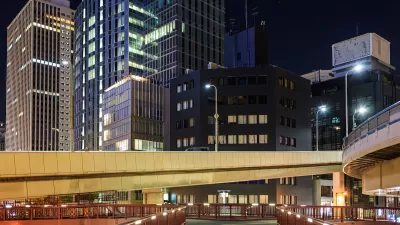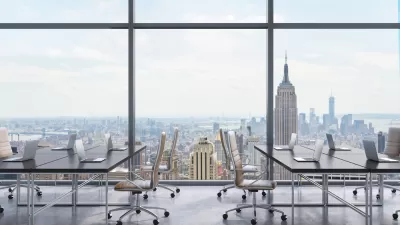The adaptive reuse of non-residential buildings has soared in recent years as demand for office space drops and the housing shortage deepens.

With demand for office space remaining low, office-to-apartment conversions continue to lead the adaptive reuse trend at 28 percent of projects, writes Mary Salmonsen in Smart Cities Dive. Hotels are the second largest source of residential conversions at 22 percent.
“Apartment conversions have risen 25% in the two years since the start of the COVID-19 pandemic, with 28,000 new units on the market converted from other property types, according to a report from RentCafe.” Of these, more than 11,000 units are in former office spaces, a growth of 40 percent between 2020 and 2021. According to the RentCafe report, “Larger office buildings in abandoned central business districts are better suited to conversion than the often-smaller office complexes distributed around the suburbs.”
Washington, D.C. leads the trend with 5.6 percent of the nation’s total adaptive reuse projects. “Philadelphia gained 1,552 converted units during this period, while Chicago converted older buildings into 1,139 new apartments.” This year, “Los Angeles is leading the nation in adaptive reuse construction for the first half of 2022 with 1,242 new deliveries — already the best year for adaptive reuse in the city’s history — and another 4,130 units in the construction pipeline.”
FULL STORY: Office-to-apartment conversions surge

Planetizen Federal Action Tracker
A weekly monitor of how Trump’s orders and actions are impacting planners and planning in America.

San Francisco's School District Spent $105M To Build Affordable Housing for Teachers — And That's Just the Beginning
SFUSD joins a growing list of school districts using their land holdings to address housing affordability challenges faced by their own employees.

The Tiny, Adorable $7,000 Car Turning Japan Onto EVs
The single seat Mibot charges from a regular plug as quickly as an iPad, and is about half the price of an average EV.

Seattle's Plan for Adopting Driverless Cars
Equity, safety, accessibility and affordability are front of mind as the city prepares for robotaxis and other autonomous vehicles.

As Trump Phases Out FEMA, Is It Time to Flee the Floodplains?
With less federal funding available for disaster relief efforts, the need to relocate at-risk communities is more urgent than ever.

With Protected Lanes, 460% More People Commute by Bike
For those needing more ammo, more data proving what we already knew is here.
Urban Design for Planners 1: Software Tools
This six-course series explores essential urban design concepts using open source software and equips planners with the tools they need to participate fully in the urban design process.
Planning for Universal Design
Learn the tools for implementing Universal Design in planning regulations.
Smith Gee Studio
City of Charlotte
City of Camden Redevelopment Agency
City of Astoria
Transportation Research & Education Center (TREC) at Portland State University
US High Speed Rail Association
City of Camden Redevelopment Agency
Municipality of Princeton (NJ)





























